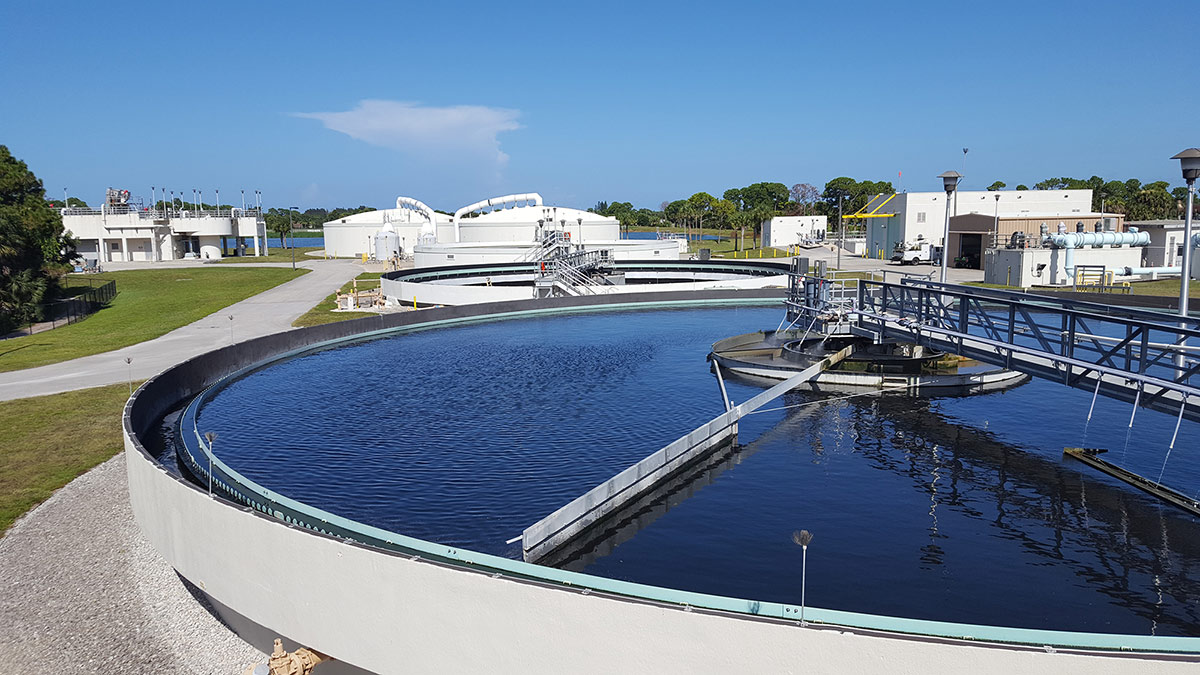Comprehensive Guide to Industrial Waste Water Treatment Processes
Comprehensive Guide to Industrial Waste Water Treatment Processes
Blog Article
Strategic Approaches to Enhance Waste Water Treatment Effectiveness and Decrease Environmental Effect
In the realm of waste water therapy, the pursuit for enhanced efficiency and decreased ecological influence is a continuous challenge that requires calculated services. The integration of sophisticated treatment technologies, energy-efficient procedures, source healing techniques, improved nutrient removal strategies, and clever tracking and control systems represents a multifaceted framework for dealing with these pressing concerns.
Advanced Treatment Technologies
Innovative membrane layer purification systems have reinvented innovative wastewater treatment processes, substantially enhancing the removal of pollutants. This modern technology has proven to be very efficient in eliminating a wide variety of impurities, consisting of pharmaceuticals, heavy steels, and natural compounds, which are frequently testing to get rid of through conventional treatment approaches.
In addition, membrane layer purification systems supply many benefits over conventional treatment methods. Additionally, these systems are highly versatile and can be conveniently incorporated right into existing treatment plants or used as standalone units for decentralized applications.
Energy-Efficient Processes
The combination of energy-efficient procedures in wastewater therapy systems is crucial for optimizing source utilization and reducing functional expenses. One essential method to boosting power performance in wastewater therapy is the utilization of advanced aeration systems, such as fine bubble diffusers or surface aerators, which can enhance oxygen transfer performance and reduce energy consumption.
Moreover, optimizing process control and automation via the use of innovative sensing units and monitoring systems can boost general power performance by changing procedures in real-time based on real need and conditions. Executing energy audits and on a regular basis keeping an eye on energy performance signs are crucial techniques to identify areas for enhancement and track energy-saving campaigns effectively. On the whole, the adoption of energy-efficient procedures in wastewater therapy not only benefits the atmosphere however also contributes to long-term expense savings and operational sustainability.
Resource Recovery Strategies
With a concentrate on maximizing source application and sustainability in wastewater treatment systems, the execution of source recovery methods becomes a pivotal element in improving functional effectiveness. Resource recovery approaches in wastewater therapy include the recognition and removal of valuable sources from the waste stream, consequently transforming what was once thought about waste right into a valuable property. By carrying out resource healing techniques such as nutrient elimination and recovery, energy generation from raw material, and the manufacturing of reusable water, wastewater therapy plants can reduce environmental influence while making the most of effectiveness.

Improved Nutrient Elimination Methods
Executing innovative nutrient removal methods is crucial for optimizing the performance of wastewater treatment systems. One of the key strategies made use of for enhanced nutrient removal is the procedure of organic nutrient imp source elimination (BNR), which entails the removal of nitrogen and phosphorus through biological processes.

In addition to BNR, advanced treatment techniques such as membrane layer bioreactors (MBRs) and created marshes can also be utilized to enhance nutrient removal effectiveness. By including these advanced nutrient removal methods right into wastewater treatment systems, municipalities and markets can effectively minimize nutrient contamination and secure the atmosphere.
Smart Tracking and Control Equipment
Using innovative modern technology, the integration of wise tracking and control systems transforms the functional performance of wastewater treatment centers. These systems include advanced sensors and data analytics to continuously keep track of vital criteria such as pH degrees, turbidity, dissolved oxygen, and circulation rates in real-time. By gathering and examining this data, drivers can obtain useful understandings right into the performance of the treatment procedures, making it possible for aggressive modifications to maximize therapy efficiency.
Smart monitoring and control systems additionally sustain remote surveillance capabilities, permitting operators to accessibility real-time information and control functions from off-site places. This remote ease of access boosts functional versatility and responsiveness, enabling swift treatments in situation of system breakdowns or changes in influent quality. The anticipating upkeep abilities of these systems help avoid devices failings and minimize downtime, ultimately improving the overall dependability of wastewater therapy operations.
Final Thought
To conclude, tactical methods such as sophisticated treatment modern technologies, energy-efficient processes, source recovery approaches, enhanced nutrient elimination techniques, and clever tracking and control systems play an essential role in improving wastewater therapy performance and decreasing environmental effect. By executing these strategies, wastewater treatment plants can improve their overall efficiency, minimize energy consumption, recoup beneficial sources, and make certain compliance with ecological laws. These methods are necessary for reliable and sustainable wastewater monitoring methods.

In look at here now conclusion, tactical techniques such as innovative treatment technologies, energy-efficient processes, resource recovery methods, boosted nutrient removal methods, and clever tracking and control systems play a crucial function in boosting wastewater treatment performance and reducing environmental effect.
Report this page